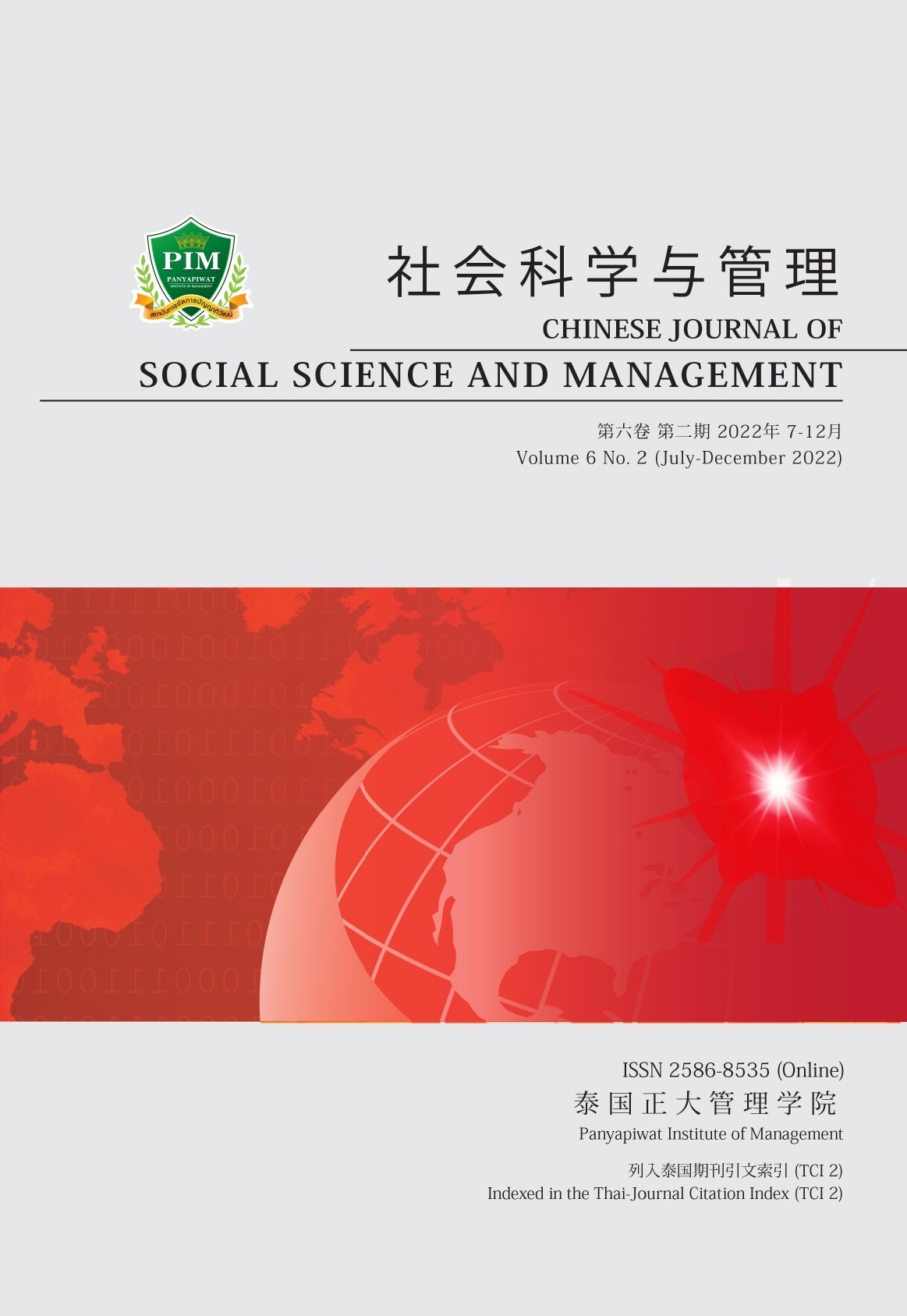THE APPLICATION OF METONYMIC COGNITIVE MECHANISM TO CONSTRUCT NON-BODY PART MEANINGS USING BODY PARTS WORDS: A CASE STUDY OF “/HǓA/” AND “/MƜ:/” IN THAI
Main Article Content
Abstract
Body parts are a conceptually rich domain, and are often used as the source domain for conceptualizing other conceptual domain, i.e. conceptualization. However, it is not arbitrary for the conceptualizer to use body parts as the source domain of conceptualization to conceptualize the other concepts. It needs to be carried out under the operation of cognitive mechanisms such as metaphor and metonymy. Among them, the metonymic cognitive mechanism plays an important role in the conceptualization no less than metaphor. Based on the viewpoint of cognitive linguistics, semantic structure is equivalent to conceptual structure, this paper analyzes the meaning extension of body part term “/hǔa/ (head)” and “/mɯ:/ (hand)” in the Thai language corpus to indirectly investigate the use of metonymic cognitive mechanism by Thai native speakers in the process of using body parts to conceptualize other non-body parts. The study found
that Thai native speakers used three types of metonymic cognitive models in the process of using body parts “head” and “hands” to conceptualize other concepts based on metonymic cognitive mechanisms, namely, THE PART FOR THE WHOLE, THE WHOLE FOR THE PART, A PART FOR ANTHER PART, and found that the body parts “head” is more prominent that “hands”.
Article Details

This work is licensed under a Creative Commons Attribution-NonCommercial-NoDerivatives 4.0 International License.
Chinese Journal of Social Science and Management Editorial Division
The Office of Research and Development, Panyapiwat Institute of Management
85/1 Moo 2, Chaengwattana Rd., Bang Talat, Pakkred, Nonthaburi 11120, Thailand
Tel. 02 855 01048 E-mail: cjssm@pim.ac.th
References
Bybee, J., Rebere, D. P., & William, P. (1994). The evolution of grammar: Tense, aspect, and modality in the languages of world. The University of Chicago Press.
Evans, V., & Green, M. (2006). Cognitive linguistics: An introduction. Edinburgh University Press.
Heine, B. (1997). Cognitive foundation of grammar. Oxford University Press.
Heine, B., Ulrike, C., & Friederike, H. (1991). Grammaticalization: A conceptual framework. The University of Chicago Press.
Lakoff, G. (1987). Women, fire, and dangerous things: What categories reveal about the mind. The University of Chicago Press.
Lakoff, G., & Johnson, M. (1999). Philosophy in the flesh: The embodied mind and its challenge to western thought. Basic Books.
Lim, J. R. (2008). Exploration of meaning on cognitive linguistics. Hankook Publishing House. [in Korean]
Lu, X. H., & Park, K. E. (2019). A cognitive linguistic study on polysemy of body part term /hua/ (‘head’) in Thai. Southeast Asia Journal, 28(3), 71-122. [in Korean]
Meechareon, U. (2009). A study of the metaphorical meaning of body part terms in Thai. Faculty of Liberal Arts, Thammasat University. [in Thai]
Panther, K., & Radden, G. (1999). Metonymy in language and thought. John Benjamins.
Park, K. E. (2012). A metaphorical meaning extension of a body part term in Thai-polysemy of /mɯ:/‘hand’. Southeast Asia Journal, 22(1), 127-150. [in Korean]
Reddy, M. (1993). The conduit metaphor: A case of frame conflict in our language about language. In A. Ortony (Ed.), Metaphor and Thought (pp. 254-283). Cambridge University Press.
Svorou, S. (1994). The grammar of space. John Benjamins.
Tawichai, S. (2014). Spatial concepts in Thai: A case study of /lǎŋ/ in the pantip.com website. Journal of Humanities and Social Sciences, 6(1), 131-148. [in Thai]
Taylor, J. R. (1989). Linguistic categorization: Prototypes in linguistic theory. Clarendon Press.
Taylor, J. R. (2002). Cognitive grammar. Clarendon Press.


